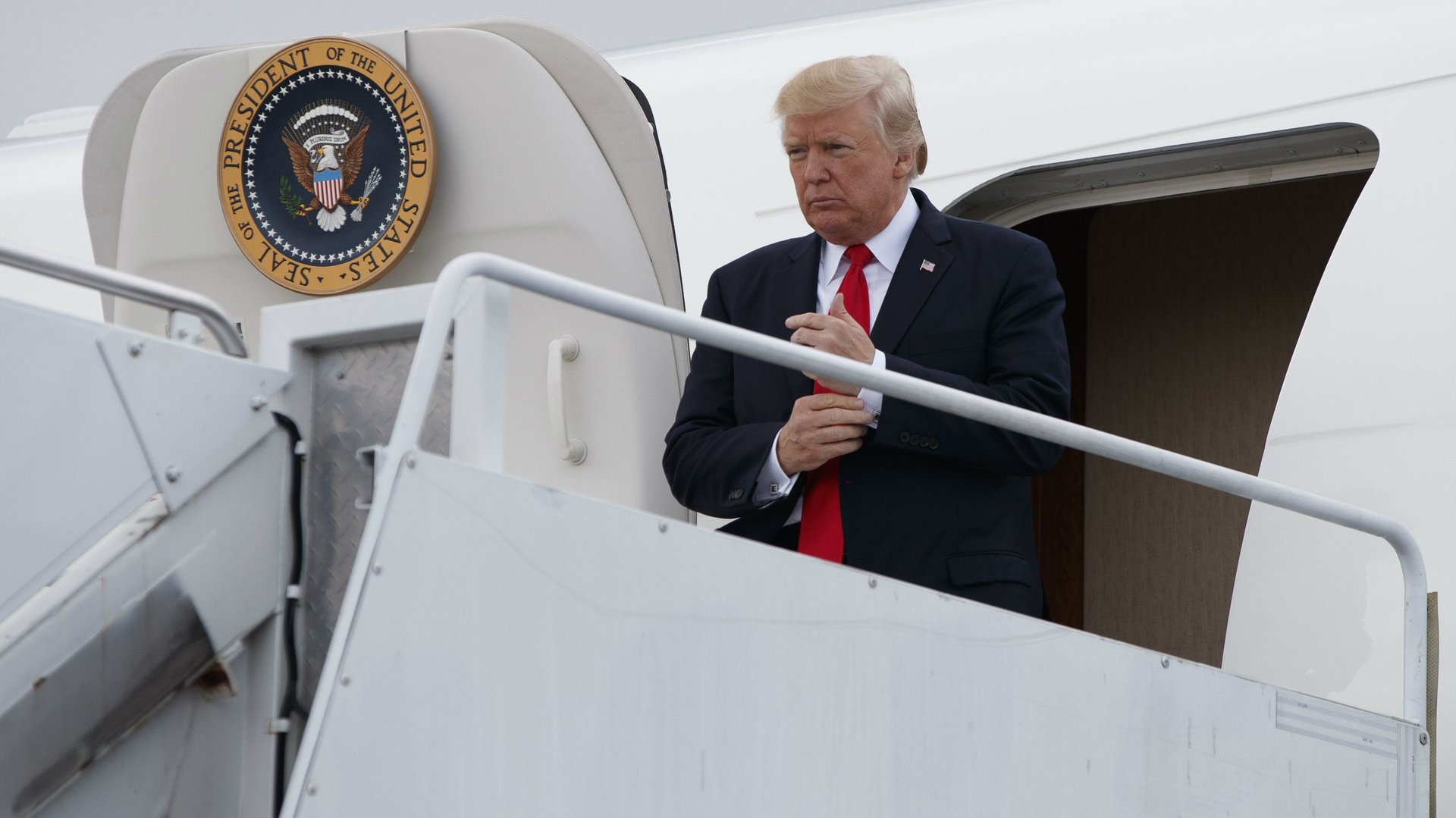The new Air Force One will be a leftover from a bankrupt Russian airline
US president Donald Trump is hoping to cut costs on his presidential travel. So the US Air Force, looking to replace the two aging Boeing 747 jetliners that currently both serve as Air Force One, is buying two almost-new 747s that were leftovers from a bankrupt Russian airline, Defense One reports.


US president Donald Trump is hoping to cut costs on his presidential travel. So the US Air Force, looking to replace the two aging Boeing 747 jetliners that currently both serve as Air Force One, is buying two almost-new 747s that were leftovers from a bankrupt Russian airline, Defense One reports.
Transaero, having gone bust in 2015, couldn’t afford the planes, and Aeroflot, which took over most of Transaero’s other aircraft, opted not to buy them. Boeing decided to bring the planes—which have no interior fittings aside from the cockpit and a few business-class seats on the upper deck—to a storage center in the Mojave Desert in California. California’s dry and arid climate helps preserve planes.
The list price of a Boeing 747-8 is nearly $390 million. How much the Air Force is paying isn’t known, according to Defense One, but it must be more than $175 million apiece. That’s because Benedict Sirimanne, president of CSDS Aircraft, an organization that buys, sells, and leases aircraft, told Quartz he tried to buy them for that price and the Air Force outbid him.
Boeing spokeswoman Caroline Hutcheson told Defense One, “We’re still working toward a deal…This deal is focused on providing a great value for the Air Force and the best price for the taxpayer.”
In December, before he became president, Trump tweeted that the budget for the upgrade, which had been scheduled by the Obama administration, was too high:
The vast majority of that price tag (it was actually $3.73 billion) is not the planes themselves but the upgrades that will turn them into secure flying White Houses. A revised budget request from the Pentagon in February revised the total cost down to $3.2 billion (pdf, p. 777). Nonetheless, if Sirimanne bid only $175 million per plane, it seems likely that the government must have got a good discount off the list price.
Except that, according to Sirimanne, no one ever pays the list price. In fact, most airlines get a 40-50% discount. “If you talk to Emirates, they get on average about 55% discount from list price on all of the aircraft,” he says. (We have asked Emirates for comment.)
That discount is so large because Boeing sees every contract as a long-term business prospect. Airlines must purchase support services from Boeing, which helps the company regain the cost of the discount in the long run.
But the Air Force would likely not get such a big discount if it were buying the planes new. ”The Air Force is different. It is not controlled by the same rules,” says Sirimanne, “The Air Force sometimes buys the airplane and says ‘we are going to do our own thing, we don’t need your support’. So, if I had to guess the Air Force would end up paying more money for these airplanes based on that relationship factor.”
Sirimanne said he thinks it’s unlikely the Air Force would have paid more than $200 million for each plane. That’s almost half off the list price, so it’s still probably less than the government would pay for brand-new aircraft.